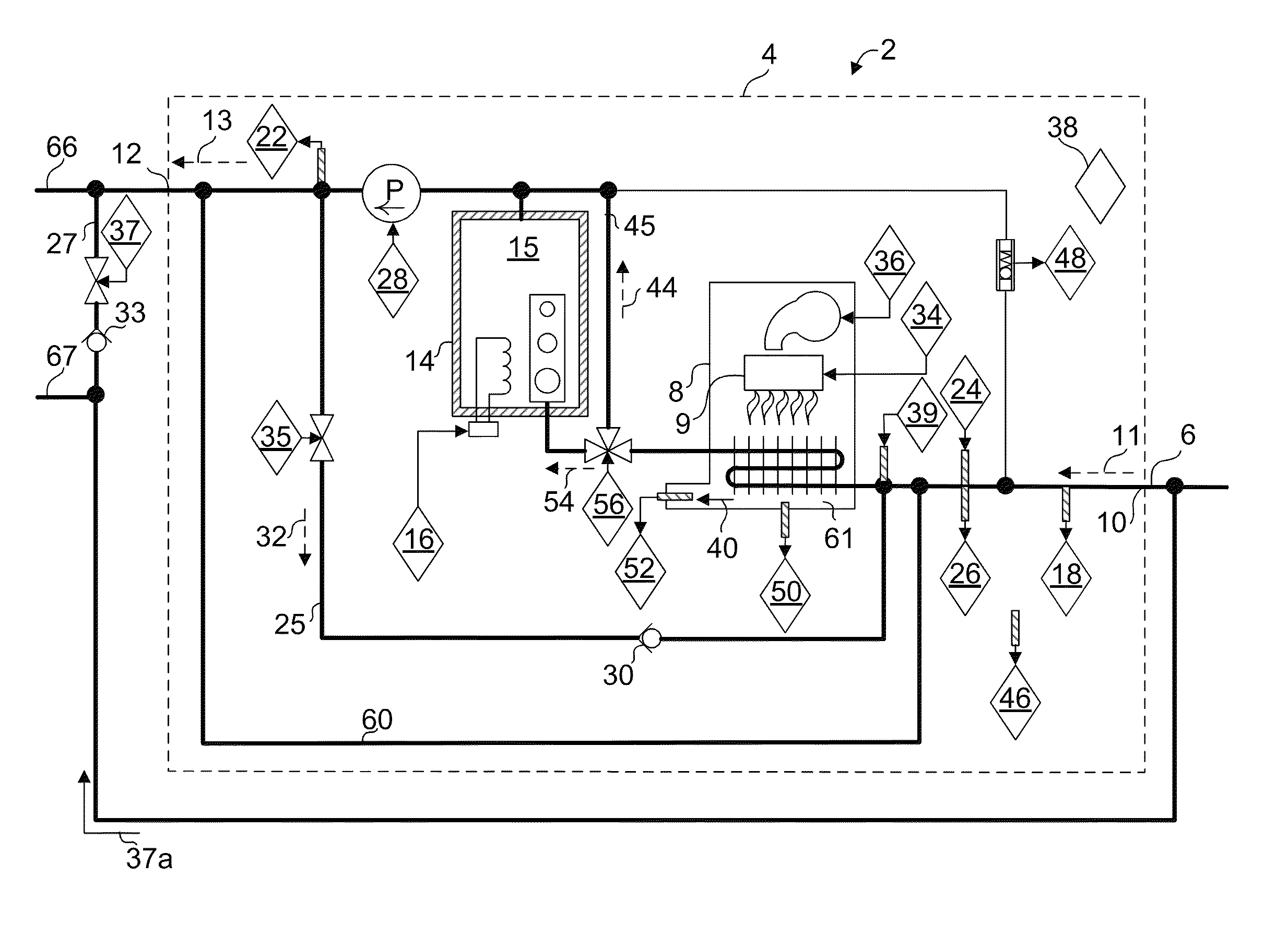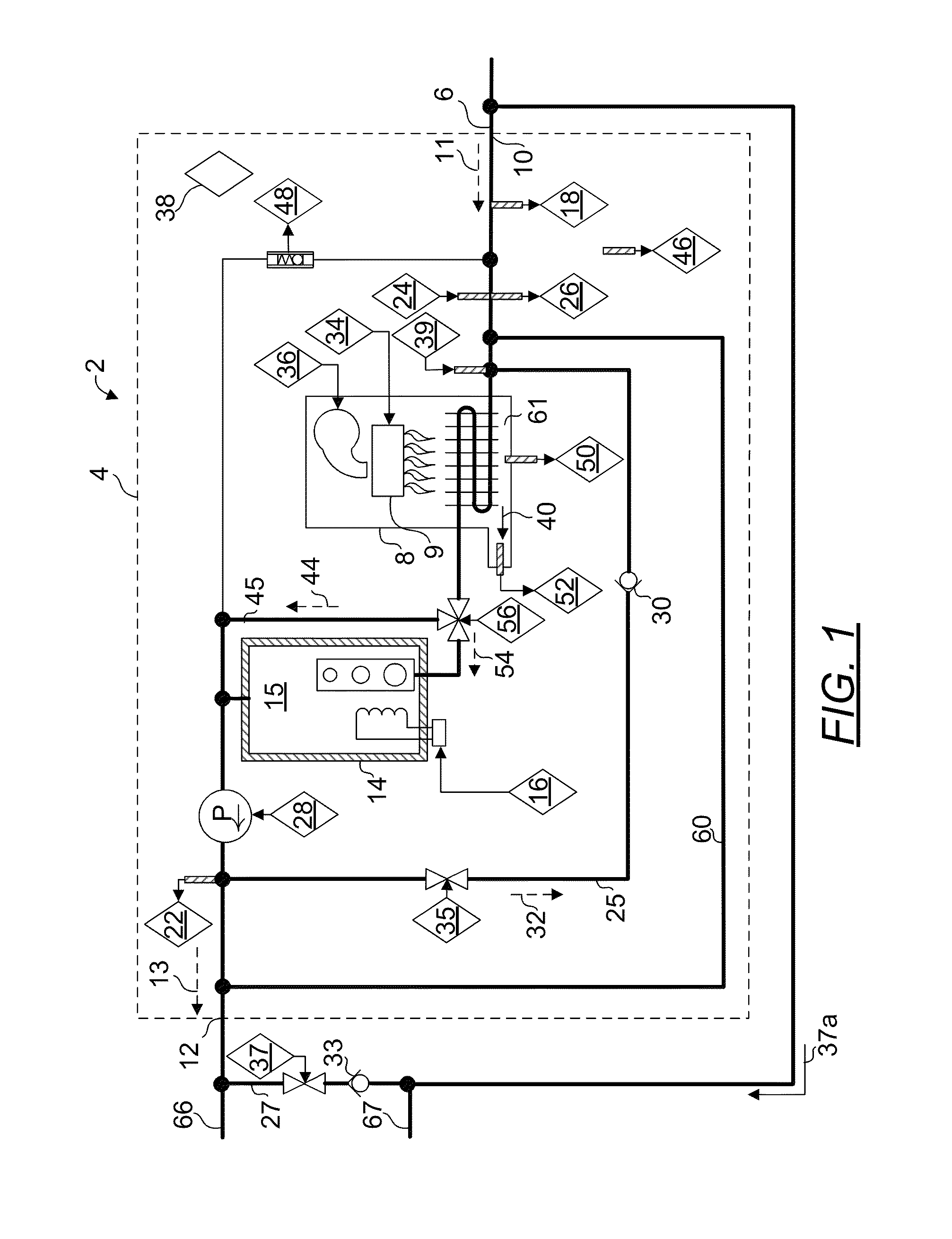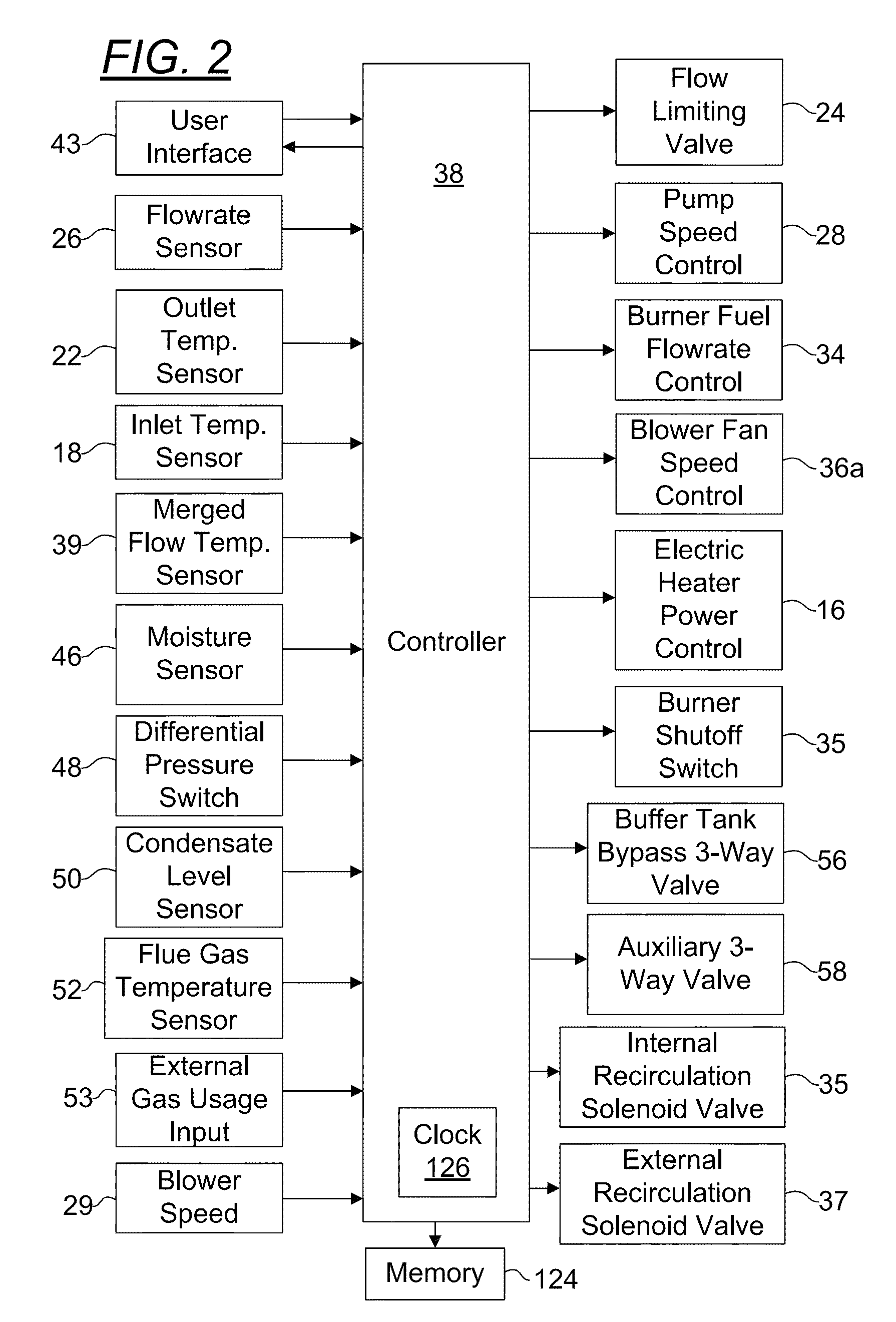Adaptive heating control system for a water heater
a control system and water heater technology, applied in control systems, testing/monitoring, heating types, etc., can solve the problems of user or device experiencing a sudden drop in water temperature, rapid increase in water demand, and water heating system presently available or prior art water heating system falling short, so as to reduce waste, reduce the delay in preparing, and reduce the effect of perceived demand
- Summary
- Abstract
- Description
- Claims
- Application Information
AI Technical Summary
Benefits of technology
Problems solved by technology
Method used
Image
Examples
Embodiment Construction
[0146]FIG. 1 illustrates one embodiment of a novel hybrid tankless water heater 2 (“water heater”) and the relative placement of various components of the system. Briefly described, the water heater 2 comprises an enclosure 4 having a thermally insulated mixing buffer tank 15 with baffles disposed downstream from a heat exchanger of a primary heating system 8. There is further provided a secondary heating element 16 to supply supplemental heat, preferably disposed in mixing buffer tank 15. The combination of two heating systems (such as gas and immersion electric) thus renders the present invention a “hybrid” water heater.
[0147]Optionally there is further provided a differential pressure switch 48 that functions to rapidly detect a need to turn on primary 8 or secondary 16 heating elements by detecting trickle or low flow. There is also provided an internal recirculating system 25 and an inverted burner system in primary heating system 8. The differential pressure switch is an impor...
PUM
 Login to View More
Login to View More Abstract
Description
Claims
Application Information
 Login to View More
Login to View More - R&D
- Intellectual Property
- Life Sciences
- Materials
- Tech Scout
- Unparalleled Data Quality
- Higher Quality Content
- 60% Fewer Hallucinations
Browse by: Latest US Patents, China's latest patents, Technical Efficacy Thesaurus, Application Domain, Technology Topic, Popular Technical Reports.
© 2025 PatSnap. All rights reserved.Legal|Privacy policy|Modern Slavery Act Transparency Statement|Sitemap|About US| Contact US: help@patsnap.com



